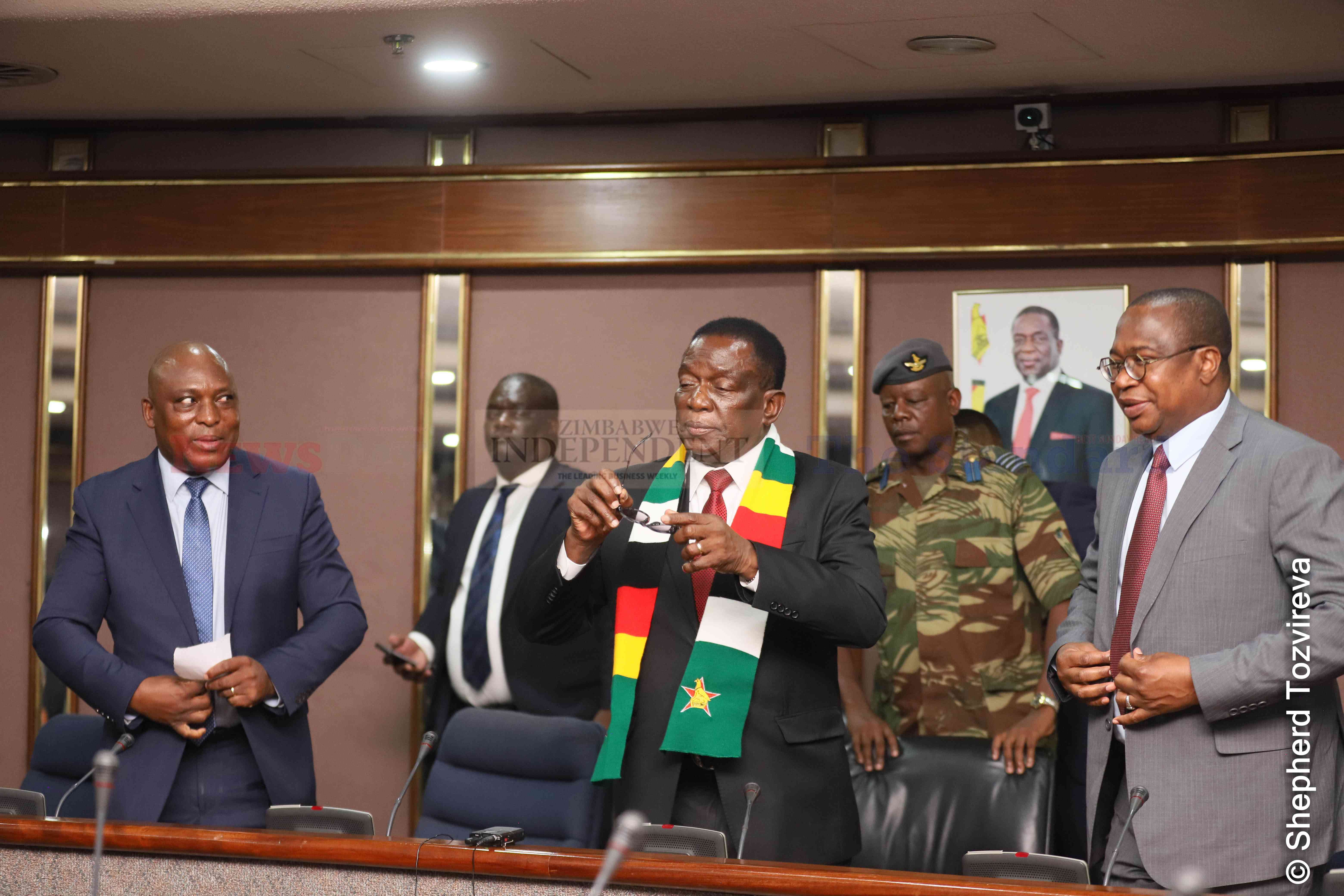
OPINION was this week divided over the viability of a structured currency that authorities say will soon be introduced, with some of the country’s leading economists warning that it would be difficult for government to convince markets to trust it.
Speaking to the Zimbabwe Independent during a week when speculation was rife that authorities were due to release a ‘structured currency today’, economists said it would be difficult for consumers to ditch the United States dollar, which they have used since dollarisation in 2009.
Zimbabwe stopped using its own currency, which had been battered by hyperinflation, in 2008.
The structured currency will be backed by 2,5 tonnes of gold, worth US$175 million, according to Reserve Bank of Zimbabwe governor John Mushayavanhu.
He told journalists yesterday after President Emmerson Mnangagwa toured the central bank's vault that the RBZ also has US$100 million cash reserves.
Finance, Economic Development and Investment Promotion permanent secretary George Guvamatanga weighed in saying the government had US$300 million cash reserves in private banks.
The bond notes which were introduced in 2016 have struggled to retain value due to high inflation.
As a result, most transactions in Zimbabwe have been taking place in US dollars.
- ‘Killer’ soldier granted bail
- NoViolet Bulawayo’s new novel is an instant Zimbabwean classic
- Village Rhapsody: Govt must ensure that devolution works
- Jah Prayzah, Zanu PF rekindles ‘lost love’
Keep Reading
Economists argued on Tuesday and Wednesday that markets were likely to stick to the US dollar, which they now trust.
The expected switch from bond notes will further affect market confidence, the experts noted.
They spoke as the Zimbabwe dollar traded at about US$1:ZW$40 000 this week, a massive fall from US$1:ZW$14 000 in January.
Annual inflation increased to 55% in March, from 47,6% in February.
Money supply has also been building up.
These factors have affected currency stability.
Vince Musewe, an independent economist, argued that memories of how the Zimbabwe dollar crashed were still etched in the market.
He said many people see the US dollar as safer to transact in.
“Zimbabweans prefer the US dollar, which is not going to change,” Musewe said.
“Demand for the greenback will continue unabated and any new currency is most likely to be merely converted into US dollars.”
Even today, Zimbabweans earning the local unit convert them to US dollars, to store value.
Markets are also rejecting the Zimbabwe dollar.
The depreciation of the local unit has affected consumers and business.
Victor Nyoni, another economist, said it would be important for Zimbabwe to demonstrate transparently how gold will back its structured currency.
“The structured currency system being proposed means that currency volatility will, to a large extent, be in response to the underlying asset — gold,” he posited.
“This means the country's gold management system must improve to tame inflation. Currency volatility is also caused by factors beyond Reserve Bank of Zimbabwe's control.”
United Kingdom-based economist Chenayimoyo Mutambasere expressed concern about the availability of adequate gold to back the structured currency.
"Based on the last monetary statement, Zimbabwe does not have adequate gold resources to use to back the country’s money supply," she said.
"To tackle the exchange rate devaluation, there is a requirement to address widespread issues to restore confidence in the economy.
“Most issues emanate from poor governance manifesting sporadic policy pronouncements, political stability, and removal of quasi-fiscal behaviour, such as the money auction run by the reserve bank. We should move to mono-currency," Mutambasere added.
However, reports said this week authorities have built significant gold reserves to back the currency.
A study carried out by the International Monetary Fund in 2022 said “de-dollarisation is a gradual process and requires low and stable inflation for an extended period of time”.
The study looked at countries in the Caucasus and Central Asia (CCA) region, which were at the time at various stages of dollarisation, but were struggling to return to de-dollarise, the process of returning back to domestic currencies.
“Overall, dollarisation is difficult to reverse, and it requires prolonged and sustained stabilisation policy efforts. CCA countries need to make their domestic currency appealing, advance financial development and enhance communication by their central banks,” the IMF said at the time.
“All countries in the region have adopted specific de-dollarisation measures.
“Based on a qualitative survey conducted for the purpose of our analysis, all countries apply higher reserve requirement ratios for foreign currency denominated liabilities vs domestic currency liabilities.
“In Azerbaijan, reserve requirement differential is 0,5%, while in Georgia it is close to 20%. To better reflect and evaluate the risks associated with foreign currency assets, all countries in the region have introduced macro prudential and administrative measures.
“They also apply additional capital requirements for unhedged foreign currency borrowers and introduced limits for the overall net foreign exchange position of banks.
“While there is some room for further regulatory measures to mitigate risks arising from foreign currency lending particularly in countries where credit dollarisation exceeds deposit dollarisation, countries like Georgia already apply almost all available regulatory tools,” the IMF added.











